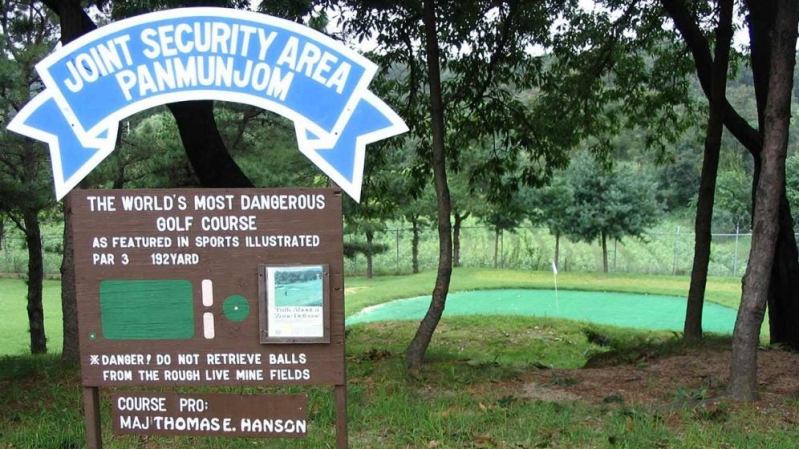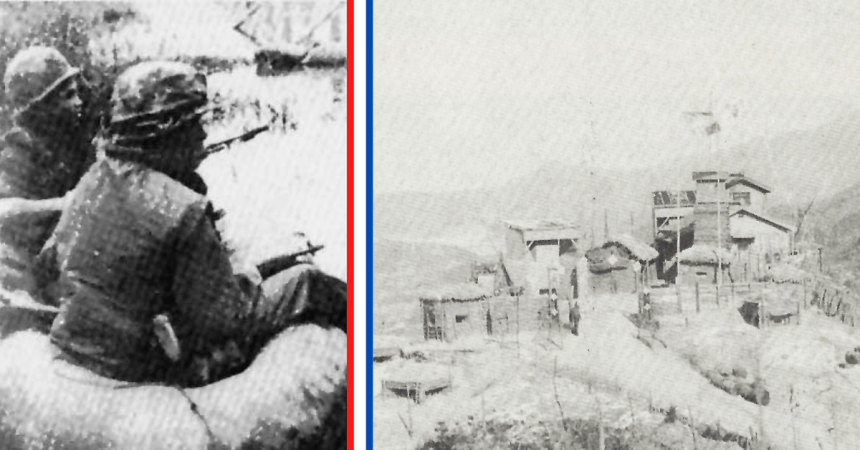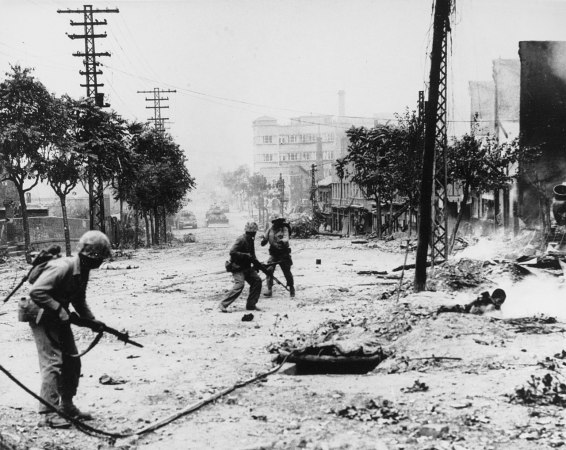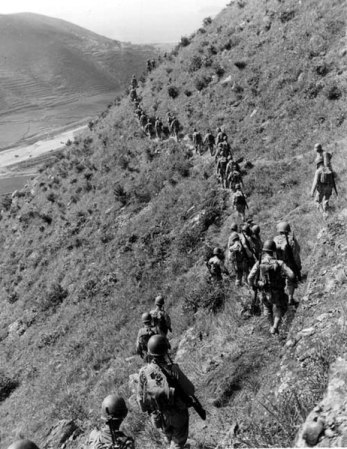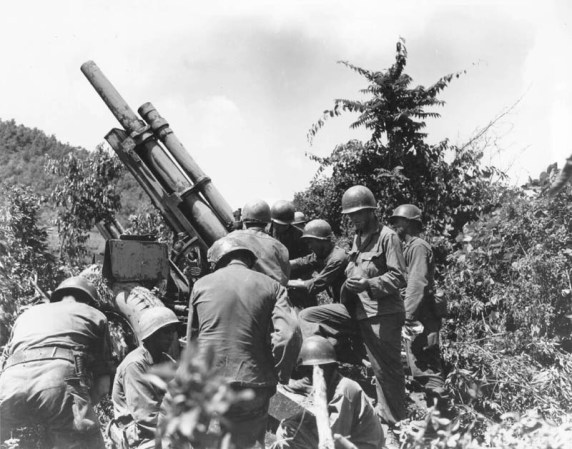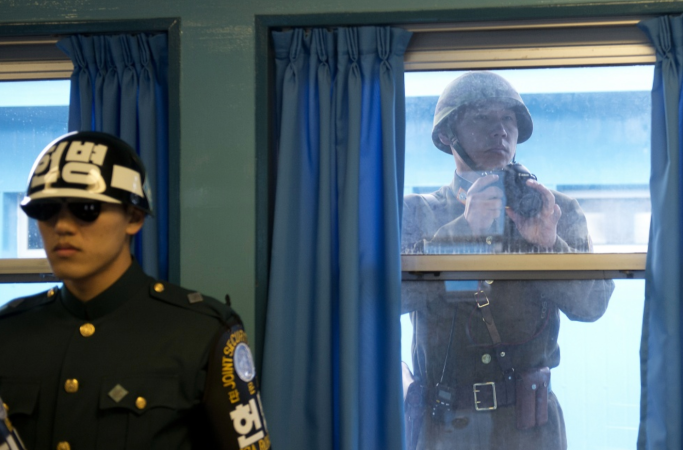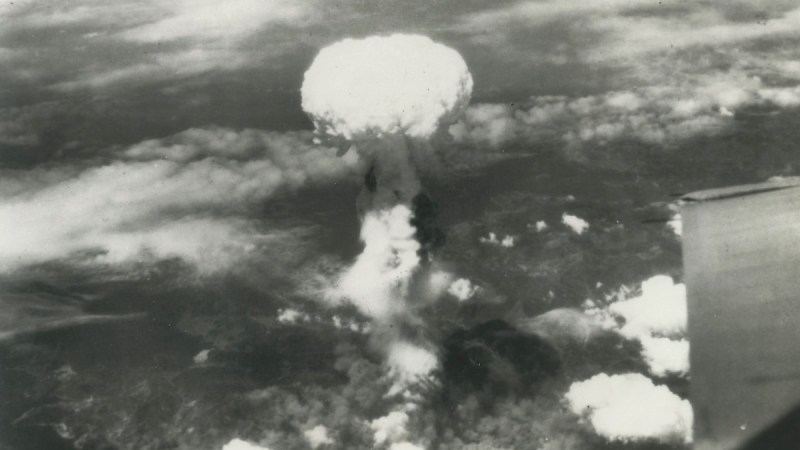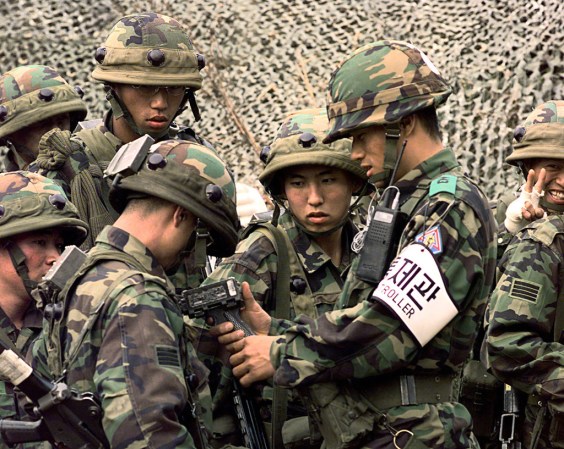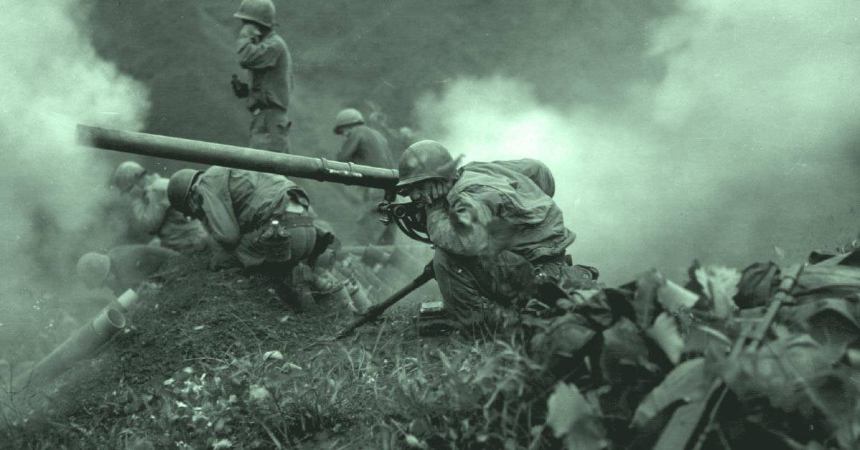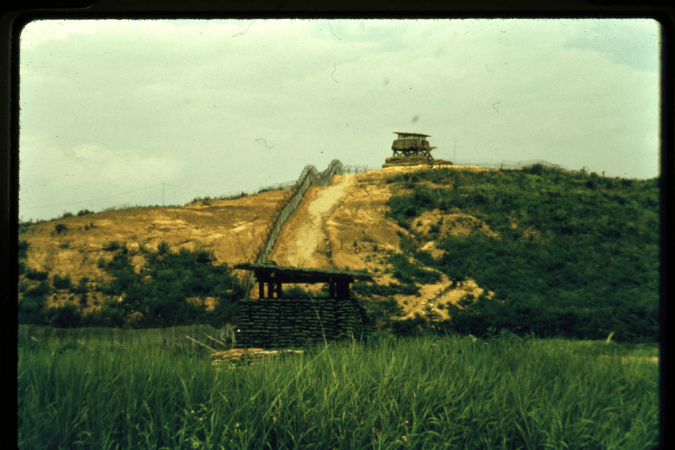It must have seemed like a relatively harmless work detail, in the way that any detail in the world’s most heavily armed border area can be harmless. When Captain Arthur Bonifas and Lieutenant Mark Barrett reported for duty to chop down a tree in the Korean DMZ, they probably never thought they’d be hacked to death by North Korean soldiers.
The two officers were leading a South Korean work detail with a South Korean officer on August 18, 1976. A 100-foot tall poplar tree blocked the view between the U.N. observation post and U.N. Command Post No. 3. North Korean soldiers were known to drag unsuspecting U.N. personnel across the North-South Korean border in this area. Bonifas himself once defused a tense situation at CP No. 3, after several Americans were held at gunpoint by Northern troops.
Bonifas was one of 19 people assigned to help take down the tree that afternoon. He led Lt. Barrett, the South Korean officer, five workers, and 11 enlisted personnel into the joint security area to trim the tree. They did not wear sidearms, as regulations restricted the number of armed people that could be in the area at one time. The workers brought axes to trim the tree.

As soon as work began, 15 North Korean soldiers appeared, led by a Northern officer, Lt. Pak Chul, who was known for being confrontational. The North Koreans watch the crew work for roughly 15 minutes before demanding they stop because North Korean President Kim Il-Sung had supposedly planted the tree. Capt. Bonifas ordered the work to continue and then turned his back on the North Koreans.
That gesture set Lt. Pak “The Bulldog” Chul over the edge. He sent a runner to get 20 more North Korean soldiers, who came carrying clubs and crowbars in the bed of a truck. He then ordered his men to “kill the bastards.” The Communists picked up the axes dropped by the work party and beat Capt. Bonifas to death on the spot.

Lt. Barrett jumped over a wall and fell into a ravine across the road. Everyone else was wounded. The U.N. Observation Post could not see where Barrett was but only that North Korean guards were taking turns going into the ravine with an axe. This continued for 90 minutes.

A search team was dispatched. They found Barrett still alive but badly hacked with the axes. He died on the way to a hospital in Seoul.
The entire incident was recorded on film.
Kim Jong-Il, speaking at a conference of Non-Aligned Nations in Sri Lanka denounced the attack as North Korean troops defending themselves from U.S. aggression.
Around 10:45 a.m. today, the American imperialist aggressors sent in 14 hoodlums with axes into the Joint Security Area to cut the trees on their own accord, although such a work should be mutually consented beforehand. Four persons from our side went to the spot to warn them not to continue the work without our consent. Against our persuasion, they attacked our guards en masse and committed a serious provocative act of beating our men, wielding murderous weapons and depending on the fact that they outnumbered us. Our guards could not but resort to self-defense measures under the circumstances of this reckless provocation.
Meanwhile, U.S. troops went to DEFCON 3 as a military response was weighed by the Pentagon and South Korean President Park Chung-Hee.

Instead of an assault, the U.S. launched Operation Paul Bunyan. Three days after the killing, 23 American and South Korean vehicles drove into the the Joint Security Area without alerting the North. They then dispatched 8 two-man teams of engineers with chainsaws to take out the tree. Two platoons of 30 men each came armed with clubs and were accompanied by South Korean Special Forces with axe handles.
The South Koreans had Claymore Mines strapped to their chests, detonators in hand, as they walked across the bridge of no return that separated the two countries. They yelled at the North Korean soldiers, daring the Northerners to cross the bridge and meet them in combat.

Meanwhile, the massive show of force operation, also had 20 helicopters in the air in the area, as well as B-52 Stratofortress Bombers flying overhead. The bombers were accompanied by F-4 Phantom IIs, South Korean F-5s and F-86s, and a number of F-111 bombers. The USS Midway Task Force was also just offshore.
North Korea deployed 200 troops to meet the force of more than 800 the U.S. and South Korea fielded. The Northerners watched the allied forces vandalize their guard posts from some buses. They eventually filed out and set up fire positions, but by then the Americans were on their way out of the JSA.

The tree was gone in 42 minutes.
While North Korean President Kim Il-Sung sent a message of regret over the incident, he never took responsibility. The ax used to kill Bonifas and Barrett is now in the North Korean Peace Museum.
In the South, the JSA’s advance camp was renamed Camp Bonifas for the fallen officer. General William Livsey, who commanded the 8th Army at the time, fashioned a “swagger stick” carved from the poplar tree’s wood. He passed it on to his successor.



